Should you Publish B2B Pricing?: Yes, No or Kinda-Sorta?
Using Price Curiosity to Acquire B2B Customers in a Self-Service World
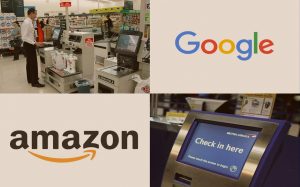
We now live in a Self-Service World; a world where the buyer decides when and how they will buy from you, even in business-to-business (B2B) scenarios.
One of the most controversial decisions for many B2B companies is how to control the dissemination of pricing information, especially in a self-service world. In many cases, companies are inclined to force visitors to “Contact Sales” for pricing.
This practice causes a problem for the prospective buyer, however, because pricing is very important, especially in the “pre-decision” stage of the buying cycle. Pricing helps them understand what you offer before they reach out to sales.
Price is the most specific piece of information customers use to understand the nature of an offering…we have miles of videotape of users asking “Where’s the price?” while tearing their hair out.
Jakob Nielson, Web Usability Expert
Think of your own online experiences.
Have you ever visited a website, were interested in what you saw and were curious, “How much is this going to cost me?” Since there was no easy option to find out, you probably went to Google to search for it. You didn’t contact sales. That company may have lost your business, and the marketing money spent getting you there in the first place, without even knowing it. Are you possibly losing business for the same reason?
Even Dilbert wants Pricing.
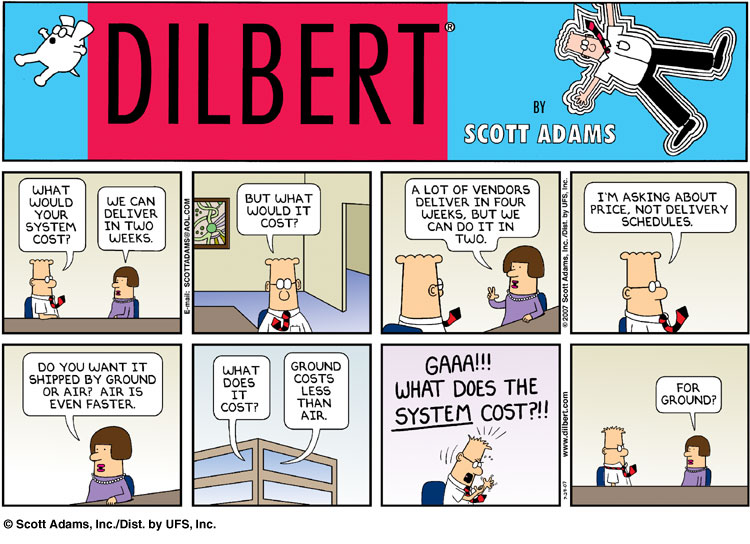
If Pricing is so important, why not just publish it?
For many companies, publishing pricing directly on the website DOES makes sense, including:
- Software-as-a-Service (SaaS) companies
- Companies that sell directly to consumers without sales interaction (B2C, D2C)
- Services companies that have straightforward offerings (marketing, insurance)
- Companies that don’t sell through complex channels like distribution and/or dealers
Why don’t companies consider pricing options on their websites?
When we open a discussion about using pricing curiosity to acquire customers for B2B companies, we almost always get some version of these responses:
- “It’s not done in our industry”
- “What happens if my competition sees it?”
- “Our products are complex and everything is custom, nothing is standard”
- “Our sales people need to build value before we discuss pricing”
- “We are an exclusive channel company; only our dealers/resellers give out pricing”
And then finally:
- “We would never do that”
We’ve heard them all!
However, there are several compelling reasons why hesitant companies should explore a way to safely provide some form of pricing information.
Capture High-Intent prospects from your current website
Smart B2B marketers know that a Pricing Request is an early indicator of buying interest. Pricing information is valuable to prospects that have “high intent” to purchase, now or in the future. Providing a pricing mechanism can help surface those high-intent prospects.
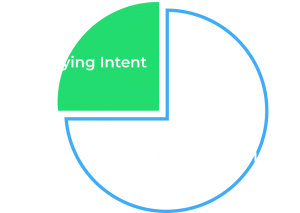
Capture prospects before they make a decision
In B2B Sales, timing is critical. To beat the competition, your Sales team must engage prospects early to build value for a high-margin win. If you find out about an opportunity after the decision has been made to buy from your competition, it can force you to discount your offering to try and win the business. A pricing call-to-action could give your sales team the inside track to build value and shape a prospect’s requirements for your solution.
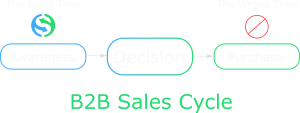
Own the Price Conversation
Here’s the logic: any buyer is trained to search for price as part of any purchase decision, especially in the early stages. They’re CURIOUS. They will continue to search until they find a price. And if it’s not easy to get, you may not be part of the price dialog. If there’s a price conversation going on anyway, don’t you want to be a part of it? It’s up to you to own the price conversation, not hand it over to Google.
Not having an easy way to get pricing may hand control of the price conversation to someone not even affiliated with your industry — or worse, your competition — to control this crucial aspect of the buying decision.
You must own the price and value dialog of your product or service, so you can provide prospects with the context they need to understand your pricing model.
What About Sticker Shock?
There are tactics you can employ to offset the fear that a prospective customer will experience sticker shock if they receive pricing — another common (and valid) concern.
First, if you are using a tool made for the job, you can provide a range of pricing based on a specific configuration versus a single “List” price. This is one of the best ways to provide a ballpark estimate without knowing all of the details about the customer’s requirements. A range gives your sales team wiggle room and also allows for channel partner pricing to be different.
Second, use testimonials right on the page that speaks to the value of your product or service. Quotes from satisfied clients or buyers who shopped around and decided to purchase your product or service is a powerful strategy. There is an innate sense from buyers that the low-cost provider is never the best, and there is more assumed value in a higher priced product.
Don’t forget the SEO opportunity
Here’s something else we’ve discovered. Ranking for pricing related keywords is easy. Why is that?
No one wants to talk about pricing on their site!
This is SEO gold. Highly searched terms with little to no competition means we should all set out to do some keyword research. Check out the terms and phrases in your industry related to “cost” and “price,” and invariably you’ll uncover some huge content opportunities.
In fact, if you adopt a self-service pricing strategy, you should blog about the fact that you provide a way to easily get pricing that your competitors don’t. Your conversions and, more importantly, sales conversations, will soar!
Always use a Pricing Page
![]() You should always have a Pricing page, regardless of what is on it (it does NOT have to list your pricing!).
You should always have a Pricing page, regardless of what is on it (it does NOT have to list your pricing!).
Make all of the buttons/links that point to that page just say “Pricing”. This simple word leaps out at prospects and they will invariably click on it. Don’t be tempted to use “Request Pricing”, “Request a Quote” or “Get a Quote”, our extensive A/B testing proves that those imply a Sales phone call and are ignored.
Even if you’re not using a Self-Service Pricing Tool like SafePrice, and your pricing page only has a Contact Us form, you will still get lots of activity to that page. Use a website id tool to identify which companies have visited that page and are curious about your pricing.
Pricing Page Examples
Our blog is full of Pricing Page Examples, but here are 2 popular ones.
Pricing Page for an Industrial Services Company
The first is for an industrial services company that does custom fabrication. There is no actual way to provide any type of pricing (other than past jobs, the scope and the estimated range; there is ALWAYS a way) so we focused on the human connection to Jamie, the Sales Manager.
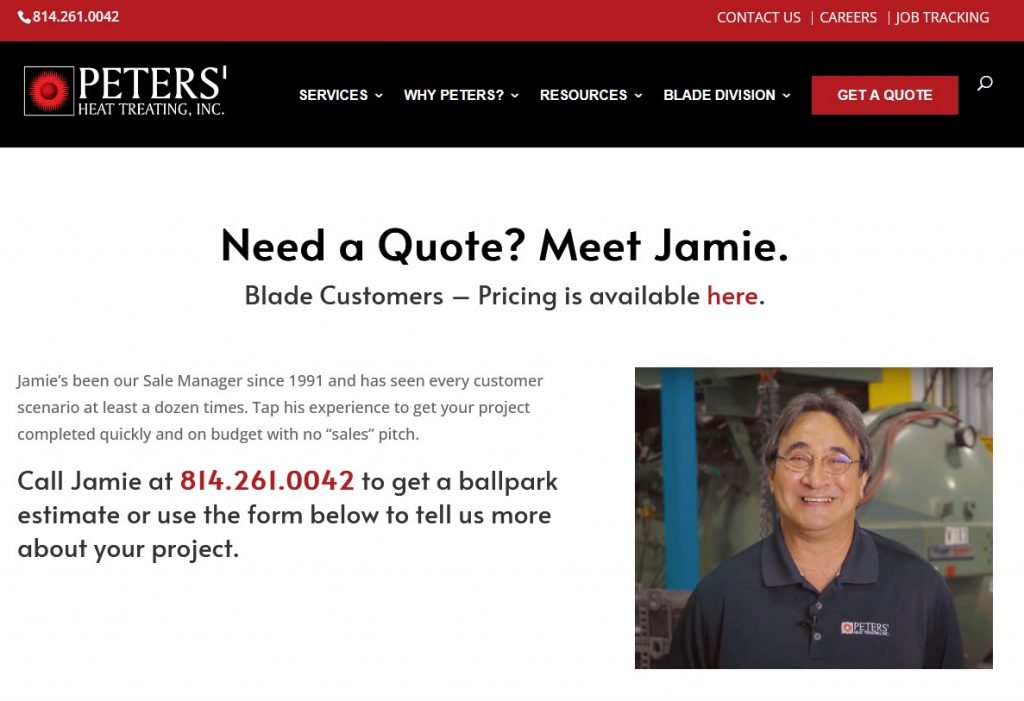
Pricing Page for an Industrial Equipment Company
This industrial manufacturer company sells high-end equipment – lots of models, options, etc. Their goal is to engage as many prospects as possible so their Sales team can engage.
One technique that we use often is to provide two (2) options to engage: 1) Full Service by filling out a form (like you do now), or 2) Self-Service Price via Email using SafePrice.io. Either way, the Sales team wins and providing both options makes visitors more comfortable choosing one.
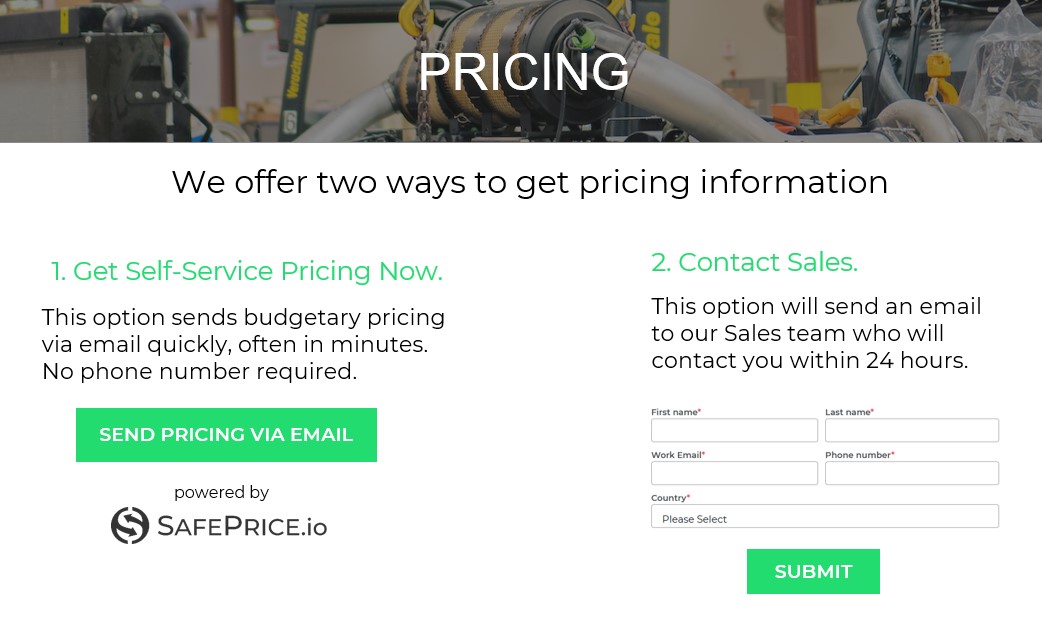
Summary
The need by prospects for Pricing is stronger than ever, especially now that we live in a self-service world. If you don’t take control of the Pricing conversation, someone else will. You can make small changes like creating content around “cost” and “pricing” to drive more inbound traffic. You should also use a Pricing page to convert the curious visitor to an active prospect.
In B2B Sales the first company in has the best chance of shaping, and winning, the deal. Using Pricing as a Call-to-Action could be your secret marketing weapon…Priceless!
Additional information:
